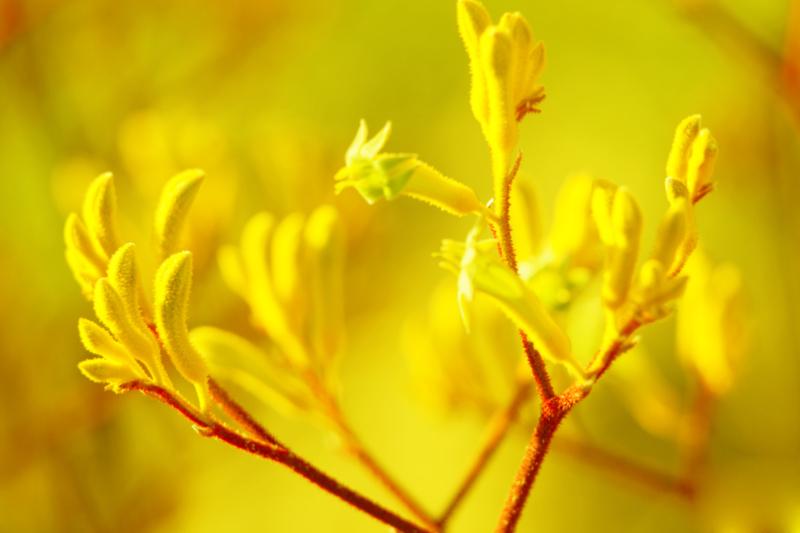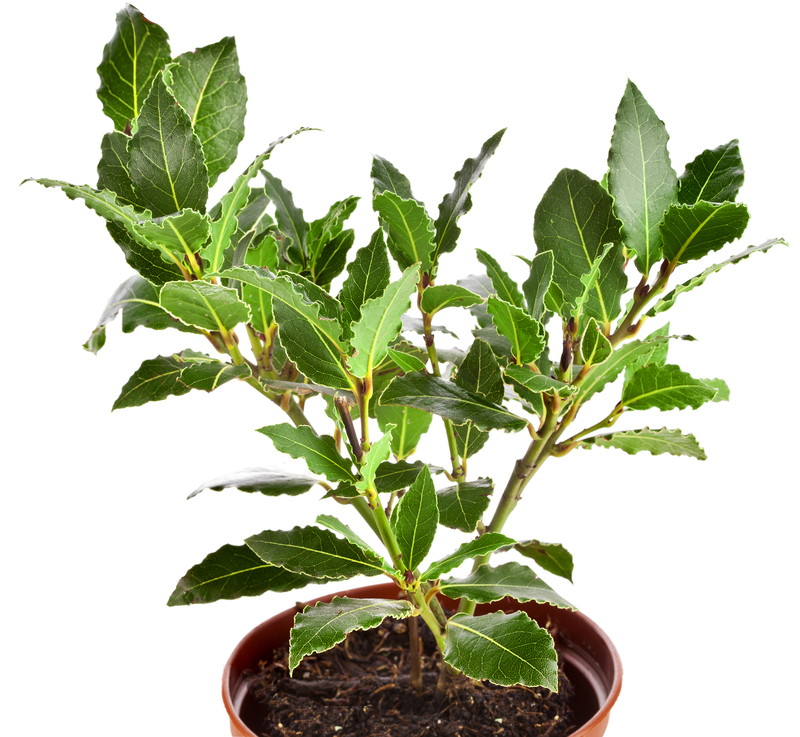Plant Choices and Layouts for Dog Owners
Posted on 15/08/2025
Introduction to Plant Choices and Layouts for Dog Owners
If you're a dog owner with a green thumb, designing a garden that is both beautiful and safe for your furry companion is essential. From selecting dog-friendly plants to organizing your landscaping for easy canine access and maintenance, every detail matters. In this comprehensive guide, we'll explore the best plant choices and garden layouts for dog lovers, ensuring your yard is both a pet-safe haven and a lush retreat for you.

Why Pet-Friendly Gardens Matter
Dogs are famed for their curiosity and playful energy. Unfortunately, not all plants are safe for pets, and some common species can pose dangerous health risks if ingested. A thoughtfully designed dog-friendly landscape ensures peace of mind, promotes a pleasurable outdoor experience for both you and your dog, and helps keep your pup healthy and happy.
Understanding Canine Behavior in the Landscape
When planning your garden, observe how your dog uses the outdoor space:
- Running paths: Dogs often create defined paths as they patrol their territory or chase after squirrels and toys.
- Digging spots: Breeds with high digging instincts may target soft soil beds.
- Sunning areas: Dogs love to bask in sunny spots on warm days.
- Shaded retreats: Especially in hot weather, your pet will seek cool, shady places to rest.
Factoring in these behaviors as you plan your pet-safe landscape layouts will ensure harmony between your dog's lifestyle and your garden's design.
Top Dog-Friendly Plant Choices
Safety is the foundation of all dog-owner garden plans. Here are some tried-and-true safe plants for dogs:
- Camellias: These reliable evergreens offer glossy foliage and showy blossoms, and are non-toxic to pets.
- Sunflowers: Not only do they brighten up any plot, but they are also safe for both dogs and cats.
- Marigolds: Cheerful and robust, marigolds repel some pests and are generally harmless to pets. (Note: Excessive ingestion might cause mild stomach upset.)
- Snapdragons: Available in a rainbow of colors, snapdragons tolerate some trampling and are dog-safe.
- Spider Plants: Ideal for both indoor and shaded outdoor spaces, these resilient plants are safe for curious nibblers.
- Basil, Rosemary, and Thyme: Many common herbs such as these are safe for dogs and are perfect for kitchen gardens.
- Ferns like Boston Fern: Most ferns (excluding the toxic asparagus fern) are pet-safe and graceful additions.
Always double-check a plant's status with reputable sources such as the ASPCA or your veterinarian before adding it to your yard.
Plants to Avoid: Toxic Varieties for Dogs
Just as crucial as knowing which plants are safe, it's vital to avoid those known to be toxic. Common toxic plants for dogs include:
- Lilies
- Oleander
- Azaleas
- Foxglove
- Sago Palm
- Autumn Crocus
- Castor Bean
- Daffodils
- Yew
If your pet ingests any of these, consult a veterinarian immediately.
Dog-Friendly Grass Options
Every pet owner wants a lush, green lawn that can withstand romps and rolls. Compared to standard varieties, these best grass choices for dog owners are more durable:
- Bermuda Grass: Resilient to foot traffic and pet waste.
- Buffalo Grass: Drought-resistant and low maintenance.
- Zoysia Grass: Dense and self-repairing, great for play areas.
- Ryegrass: Grows quickly, ideal for overseeding and patch repair.
Tip: Train your dog to use a designated potty area to prevent nitrogen burn and bald patches.
Designing a Dog-Friendly Landscape Layout
Good design is a blend of aesthetics, practicality, and pet comfort. Consider these dog-proof garden layout ideas:
Defined Dog Paths
Let your dog's natural habits guide your hardscape design. Reinforce frequently used routes with materials like:
- Pea gravel
- Natural flagstone
- Decomposed granite
- Mulch (avoid cocoa mulch, which is toxic to dogs)
These surfaces prevent muddy paws and help your landscape stand up to canine traffic.
Safe Borders and Barriers
Separate delicate beds and veggie patches from active play areas with:
- Low, sturdy fencing
- Boxwood or non-toxic hedges
- Decorative stones or logs
Raised beds are another smart solution for protecting fragile plants (and for keeping dogs from digging where they shouldn't!).
Choose Tough Groundcovers
Instead of fragile groundcovers that can't handle a dog's play, try options like:
- Irish moss (Sagina subulata)
- Creeping thyme (Thymus serpyllum)
- Lawn chamomile (Chamaemelum nobile)
These plants are soft on paws yet resilient under foot traffic, perfect for pet-friendly yards.
Shade and Shelter for Canine Comfort
Your dog will appreciate places to cool off during warm months. Incorporate:
- Shade trees (e.g., dogwood, redbud - both non-toxic)
- Trellises covered with safe climbing vines (like passionflower)
- Dog houses or waterproof shelters
Avoid using sharp rocks or thorny shrubs in shaded rest areas.
Water Features and Play Zones
Dogs love water! Install a shallow splash pool or self-refilling water station. For enrichment, include:
- Sand pits for digging
- Obstacle courses made from logs or safe agility equipment
- Interactive toys attached to posts
These zones prevent boredom--and damage to your prized flowerbeds!
Tips to Maintain a Dog-Safe Garden
Regular maintenance prevents small issues from becoming big problems. Follow these essential tips for gardening with dogs:
- Inspect for toxic volunteers: Remove any unknown or wild plants promptly.
- Mulch safely: Use cedar, pine, or cypress mulch; avoid cocoa mulch.
- Secure gates and fences: Check regularly to make sure all containment is dog-proof.
- Rinse chemicals: After treating for pests or fertilizing, wait until all chemicals have dried/settled before allowing access.
- Compost with care: Keep compost bins sealed, as moldy food waste can tempt pets and make them ill.
- Use organic options: Whenever possible, rely on non-toxic, all-natural fertilizer and pest control.
Balancing Beauty & Safety: Aesthetic Dog-Friendly Planting Ideas
Pet-owners don't have to sacrifice style for safety! Here's how to cultivate a garden that's beautiful and dog-friendly with creative inspiration:
Colorful, Non-Toxic Blooms
- Mix calendula, zinnias, roses (without thorns), and nasturtiums for bright, cheerful beds.
- Use ornamental cabbages and lettuces for unique color and texture (safe for curious pups to nibble).
Fragrant, Functional Borders
- Lavender (in moderation) and catmint are pleasing to humans and resilient to rough play.
- Create low hedges with boxwood or sweet violets to give structure while remaining pet-safe.
Edible Gardens for Pets and Humans
- Grow blueberries, strawberries, or carrots in raised beds--safe and tasty for you both.
- Plant wheatgrass for dogs to chew, aiding in digestion.
Textural Variety
- Add non-toxic grasses like carex or fescue for softness underfoot and visual variety.

Frequently Asked Questions: Plant Choices & Dog-Safe Garden Layouts
What are the most common toxic plants for dogs I should avoid?
Some of the most dangerous are sago palm, oleander, foxglove, lilies, and azaleas. Regularly check new purchases for toxicity before planting.
I want a low-maintenance garden. Which plants should I choose?
Bermuda grass, sunflowers, rosemary, thyme, camellia, and marigolds are tough and require little fuss.
How can I prevent my dog from digging up plants?
Provide an alternative: a dedicated sand pit or digging corner, and reinforce garden boundaries with raised beds or decorative stones.
Can I have a vegetable garden with dogs?
Yes! Use raised beds and focus on dog-safe vegetables like carrots, celery, lettuce, and peas. Fence sensitive crops if needed.
Is mulching safe for dogs?
Avoid cocoa mulch, and opt for cedar, pine, or cypress mulch. Monitor your dog to prevent excessive chewing or ingestion.
Conclusion: Creating a Safe and Stunning Garden for Dogs
With careful planning, dog owners can enjoy a vibrant, lush landscape without compromising pet safety. Choose only non-toxic plants, respect your dog's natural behaviors, and use inventive layouts that both protect your greens and enrich your pet's experience. A dog-friendly garden merges function and beauty--and becomes a beloved space for the whole family, paws and all.
Remember: When in doubt, always verify plant safety before introducing anything new to your pet's environment. Happy gardening!



